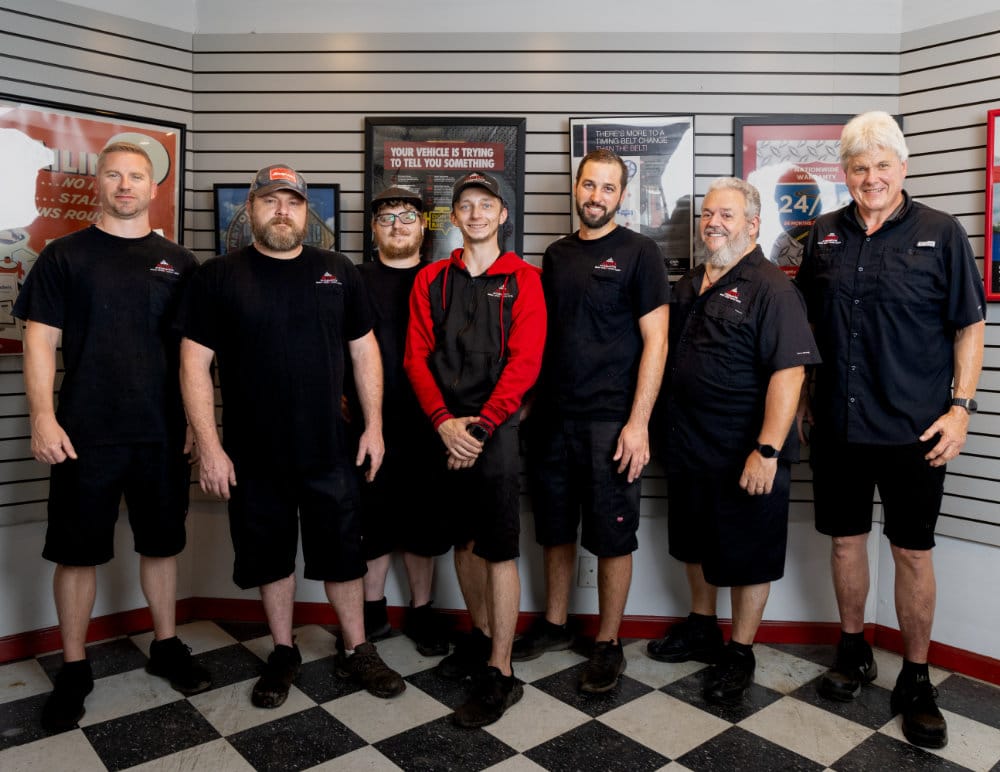
Automotive Maintenance is done before an item is worn beyond service limits or broken. Every vehicle has a maintenance schedule, based on usage and environmental factors. Most manufacturers have schedules for normal and severe service.
The following items list the difference in what is considered severe and what is normal. It is important to let the maintenance provider know how your vehicle is driven and environmental conditions.
Severe Driving
- Driving on dusty, rough, muddy, or salt-spread roads
- Towing, police, taxi, or commercial operation
- Extensive idling and/or low-speed operation
- Repeated short-trip operation
- Extensive use of brakes while driving
- Driving in sandy areas
- Operations in heavy city traffic, stop and go traffic
- Driving at temperatures over 90 degrees
- Driving in temperatures below freezing
Normal or non-severe driving
- Warming engine other components up to operation temperature before driving
- Driving on the open road with no stops at moderate speeds
- Driving in temperatures higher than freezing and less than 90 degrees, low humidity and no precipitation.
- Driving where there is no sand, muddy conditions, chemical treatment or salting of roads
- Driving on smooth even roads with no pot holes
If you drive under any of these severe conditions, your vehicle will require more maintenance to drive and perform as intended with fewer repairs or breakdowns. Another consideration is how long you anticipate keeping your vehicle and resale value (vehicle with good maintenance records is always valued higher). If you are like a lot people now days, keeping a vehicle over 200,000 miles is more the norm. Where as 100,000 miles not too long ago was considered worn out and ready to be crushed.
With all the new advances in vehicle materials, designs and fluids, cars and trucks last longer. All the manufacturers try to cut cost of operation per mile so that their cost of operation is lower than their competitor. They have consumers doing less maintenance, extending oil change intervals and calling fluids life time (life time transmission fluid / life time coolant / life time power steering). These fluids are greatly improved, but their additives wear out and a small amount of material from normal wear buildup. This buildup of worn materials and aging of additives create an effect, much like a snowball rounding down hill, causing at some point rapid damage and destruction.
Weekly, we see higher mileage vehicles that have problems that they would not have if they had done more maintenance. We are finding out from doing the service and repairs that with the minimum maintenance being performed that issues have arisen and lead to having more repairs. Compared to vehicles that had more maintenance relative to its owner’s habits and situation, we have noticed they need fewer repairs. Also they were in much better condition, lasted longer and retained their value.
Items needing maintenance are: Fluids, Belts, Hoses, Tires, Filters, Suspension, Battery, Engine, Transmission, and Drive Lines.
If you are wondering what is due on your vehicle at this time and mileage, call or email with your year, make, mileage, and how vehicle is used. Also past history of maintenance would be helpful. We can look it up in our database and the manufacturers maintenance schedule and advise.
Items That We Perform Maintenance On:
- Engine Internal Mechanical
- Drive and Timing Belts
- Brakes, Mechanical
- Tires
- Brakes, Anti-lock Braking System (ABS), Automatic Traction Control (ATC)
- Transmission
- Heating and Air Conditioning
- Batteries, Starting and Charging System
- Wiper and Washer Systems
- Engine and Transmission Cooling Systems
- Drivetrains, Axles, Differentials, and Transfer Case
Items That We Inspect:
- Engine Exhaust
- Powertrain Management and Emissions
- Relays, Sensors, Switches and Modules
- Restraint Systems and Seat Belts
- Body Control, Body and Frame
- Windows and Glass
- Suspension, Shocks and Struts
- Creature Feature on Modern Vehicles
- Electrical, Lighting (internal or external), and Electronic Systems
- Accessories and Optional Equipment
- Instrument Panel, Cruise Control, Gauges and Warning Indicators
